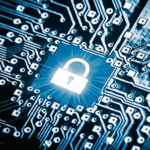Do you and your team check important reports during commutes or update project details while waiting for a flight? We’re all about multitasking, but it’s a different story in cybersecurity.
Not all connection networks or devices offer the same levels of security. The more flexible you are, the more you compromise sensitive data.
Now, here’s when two-factor authentication comes in handy. It ensures data remains confidential and operations stay flexible yet secure.
This article will help you understand the basics and benefits of two-factor authentication. Read on to discover how it can help your company thrive in an ever-connected world.
What Is Two-Factor Authentication?
Two-factor authentication (2FA) adds an extra layer of identity verification to conventional password mechanisms. It prevents identity theft by combining knowledge-based elements (e.g., passwords) with possession-based elements (e.g., mobile devices, key fobs, or security tokens). Here’s how it works:
- User Login. Enter your username and password as you normally would.
- Second Factor Generation. After entering the password, the system sends a one-time code to your phone or authentication app.
- Code Entry. Input the security code, scan your fingerprint, or use a security token as instructed.
- Access Granted or Denied. If both checks pass, you’re in. If not, the second factor blocks unauthorized entry.
The benefits of multi-factor authentication (MFA) are paramount for safeguarding sensitive information. That includes confidential documents, financial transactions, intellectual properties, and user accounts. If someone attempts to breach your security systems, they’ll be unable to proceed without the second authorization.
Now that we’ve covered how two factor authentication works, here’s why you should employ it.
Why Two-Factor Authentication For Data Protection
No system is 100% immune to security threats. However, adding two-factor authentication is a handy barrier to impede malicious hackers.
In fact, recent data from Google Authenticator reinforces its efficacy against various cyber threats. It triggers the second authentication process when there’s a suspicious sign-in attempt. These are the outcomes:
- One-time codes sent via SMS blocked
- 100% of automated bots
- 96% of bulk phishing attacks
- 76% of targeted attacks
- Push notifications or on-device prompts withstood
- 100% of automated bots
- 99% of bulk phishing attacks
- 90% of targeted attacks
2FA codes and prompts are time-sensitive. They’re generated in real-time and often have a short expiration window. Thanks to this dynamic nature, they’re resistant to replay attacks where intercepted codes are reused after the fact. Below are more practical benefits of implementing 2FA for your business.
4 Benefits Of 2FA For Business Digital Security
2FA can help modern enterprises bolster their digital defenses and maintain operational integrity in the long run. In this section, we’ll cover the benefits of two-factor authentication. Read on to find out how it can help you craft a rock-solid security setup for your organization.
Cost-Effective Security Measure
Cyberattacks can lead to astronomical expenses, including operational disruptions, reputation damage, regulatory fines, and potential lawsuits. Investing in 2FA as a preventive measure is nothing next to the costs incurred in a security crisis aftermath.
Secure Remote Access
Remote workers may connect to public Wi-Fi networks in cafés, airports, or other public spaces. Even if an attacker obtains login credentials via these insecure networks, the second authentication factor would deter their access. IT administrators can also track user logins and access patterns. With these audit trails, it’s easier to identify any unusual or suspicious activities.
User-Friendly Approach
The two-factor authentication method is straightforward, intuitive, and accessible for all. Employees may perform it on any device with no further training. Customers, on the other hand, can access your platforms and authenticate their identity without significant delays.
Integration With Threat Intelligence
Threat intelligence integration allows 2FA systems to adjust security protocols in response to the latest threats. If a new phishing technique is identified, the 2FA can adopt policies to scrutinize authentication attempts more closely. Thus, you won’t have to rely on static protocols or play a perpetual cat-and-mouse game with data breaches.
Consulting with cybersecurity experts or solution providers like 7tech can further tailor your organization’s 2FA system. Our expertise ensures a customized implementation. We align with your specific needs while also maximizing the benefits highlighted above.
Take Your Security To The Next Level With 7tech
Two-factor authentication’s extra layer of defense against cyber threats is a worthy business investment. It offers a cost-effective security measure, secure remote access, user-friendly navigation, and smart integration.
Not sure how to get started? Look into 7tech’s all-in-one Threat Detect and Prevention IT security suite. It features two-factor authentication (2FA), multifactor authentication (MFA), data encryption, hard drive encryption, and dynamic access controls.
Our experts can collaborate with your IT team or handle everything. Learn more about 7tech’s managed IT services today.
Neal Juern, CEO of 7tech, is a seasoned cybersecurity advisor known for his strategic insights in Zero-Trust Cybersecurity. It’s his passion to help businesses protect their data. If you’re interested in doing that in-house, then check out his free Masterclass.








